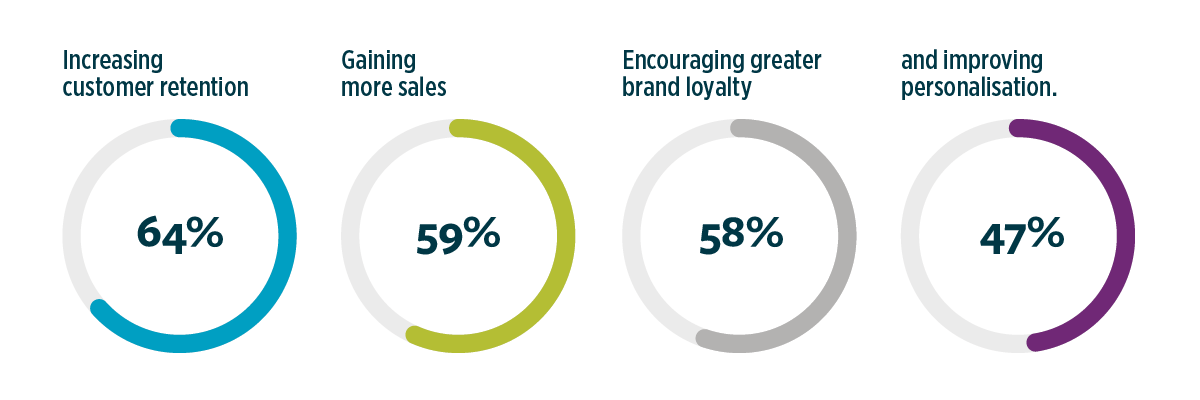
How to Successfully Launch and Expand Your Grocery eCommerce Solution
Ensure your grocery eCommerce solution is successful, both at launch and well into the future, with these tips and checklists. This is the fourth in a series of 4 blogs, based on our resource, The Modern Grocer’s Guide to Winning at eCommerce. Each blog shares key insights from the guide that will help grocers develop a compelling and profitable eCommerce experience that they own and can control.
After much careful planning and hard work, you’ll be ready to roll out your grocery eCommerce solution to customers. True grocery eCommerce success requires a solid launch plan, as well as post-launch follow-up to evaluate how to expand eCommerce and further increase profitability. Here we explore factors inherent to the success of your program, at launch and beyond.
3 ingredients for a successful launch
There are three key ingredients to ensure the launch of your grocery eCommerce solution is successful: training, communication, and evaluation. Although you may be tempted to rush some of these to get your solution to market quickly, they are essential to ensure you continue to offer a positive and seamless customer experience despite the changes brought about by COVID-19.
- Widespread training. Everyone in your organization who interacts with customers in any way should understand how your new eCommerce system works and be familiar with its key features and benefits. This includes in-store staff who might have to field questions from customers. Operational staff need to understand how the new eCommerce platform integrates with current practices and processes, so they can respond quickly to an influx of orders. They also need to be trained on the eCommerce reporting system to ensure effective online display, accurate pricing, and efficient re-stocking. These are especially important in the wake of the supply chain disruptions that have affected so many items on grocers’ shelves throughout the pandemic.
- Clear communication. It’s important to keep all employees in the loop by providing both specific information relevant to their role and information concerning the bigger picture of the eCommerce implementation. Regular, ongoing communications in a variety of formats and media will ensure that no one is left out. Good communication practices also help smooth out any potential rough spots and help to maintain a consistently positive tone throughout implementation.
- Solid evaluation. Measuring the success of your eCommerce implementation requires a disciplined approach. There are a number of key performance indicators (KPIs) that can help you gauge success. One is customer lifetime value (CLTV)—the total value a customer brings to your company over the lifetime of the relationship. Organizations that monitor CLTV have noted increased customer retention, more sales, greater brand loyalty, and improved personalization.
Organizations saw benefits of monitoring CLTV in…
Prepare for a successful launch using our eCommerce Website Launch Checklist. Get yours now when you download The Modern Grocer’s Guide to Winning at eCommerce.
Keep improving your eCommerce experience
COVID has accelerated consumer adoption of grocery eCommerce, and this enthusiasm for online shopping is expected to continue. It’s imperative that grocers invest in maintaining and expanding their offerings to retain loyal customers by offering the digital features they want and need.
By constantly evaluating your KPIs and comparing them to industry benchmarks, you can begin to identify possible next steps in evolving your eCommerce offering. A few of the many questions to consider:
- Is there an opportunity to increase revenue? Analyze online shopping behavior and compare it to offline behavior to see if there are opportunities such as promoting your private label brand or increasing average order value.
- Are there gaps in your offerings? Are some items available in-store only? Are there features that could be added to increase your digital maturities, such as digital coupons or interactive pickers? Or perhaps your last-mile service could be expanded or improved.
- Is it time to de-list from the delivery provider’s marketplace? If you are currently also sending traffic to a delivery-provider marketplace, you will reach a point where you want to be less reliant on them and retain more control of the brand experience and shopper loyalty.
In our eBook, The Modern Grocer’s Guide to Winning at eCommerce, we explore these and other questions in greater detail to help you evaluate what’s next. We’ve also compiled a list of the possible ways to evolve and expand your eCommerce offering. This includes the key features of digitally mature grocery eCommerce solutions. You can find all of this, plus the key industry trends that could influence the evolution of your eCommerce program when you download our free eBook.
The Modern Grocer’s Guide to Winning at eCommerce
Download Now
Looking for more grocery eCommerce solution strategies and insights? You might also enjoy:
 Newsroom
Newsroom

